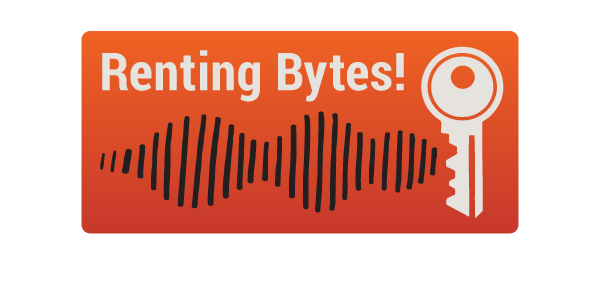A longer lease on life: issues for older renters
Robert Mowbray • 21/06/2018
With a surplus of $3.9 billion for 2016-17, the 2018 NSW State Budget had its winners and losers. The latter include seniors and renters. This blog examine some of the issues confronting older renters.
How does one define 'older person'. There is a helpful discussion of the definition of 'age' in the Australian Law Reform Commission's Discussion Paper on 'Elder Abuse'. Paragraphs [1.33] and [1.36] read:
The idea of someone being an ‘older’ person is a relative concept — chronologically, medically and culturally. It does not have a precise definition and specific ages may be used for particular purposes. For example, the Australian Bureau of Statistics (ABS) groups people into population age cohorts, and differentiates between ‘15 – 64’, ‘65 years and over’ and ‘85 years and over’. People over 65 are generally classified as ‘older’ for ABS purposes.
Family and Community Services’ NSW Ageing Strategy 2016-2020 (pp 26-28) identifies older people’s ability to live in affordable, accessible, adaptable and stable housing as a priority of the NSW Government. It asserts:
... older people increasingly prefer to ‘age in place’ and grow older in their own communities – close to friends, family and services.
 The NSW Government does not have an explicit ‘ageing-in-place’ policy. Certainly, it would be worthwhile implementing an explicit policy and, further, establish benchmarks against which wider Government policies can be measured regarding consistency. The value of this will become obvious further into this blog.
The NSW Government does not have an explicit ‘ageing-in-place’ policy. Certainly, it would be worthwhile implementing an explicit policy and, further, establish benchmarks against which wider Government policies can be measured regarding consistency. The value of this will become obvious further into this blog.
Nevertheless, a number of significant documents commissioned as part of the NSW Ageing Strategy refer to it, where a basic principle underlying it being that older people know what is best for their own lives and have the right to make decisions on their own behalf. An ‘ageing-in-place’ friendly policy provides the incentives for individuals to remain living in a community to which they have a strong attachment, either in their existing residence or alternate accommodation, with service supports.
Dire circumstances
Alan Morris’s book entitled The Australian Dream: Housing Experiences of Older Australians draws on the stories of 125 Australian pensioners and compares their experiences with the trends and needs of an ageing Australia. He probes the growing divide between older private renters, those who live in social housing and pensioners living in their own home. Here's an excerpt about private renting:
It's like a pressure cooker. You don't know where to go or what to do.' ... 'It was so desperate, the search for affordable accommodation, that I went down with a heart thing and was rushed to hospital.
On 26 October 2016, quoting from Alan Morris's publication, Jennifer Duke says that at least 100,000 older Australians in the private rental sector are living in 'dire circumstances' ... and this figure is expected to grow substantially if current policies and approaches to housing affordability aren’t changed.
On 12 December 2016, Alan Morris penned an article for The Conversation entitled ‘Why secure and affordable housing is an increasing worry for age pensioners’. He writes:
An increasing proportion of older Australians on the age pension will be dependent on the private rental sector in coming decades ... and the prospects for this group are grim.
An increasing number of older women in the private rental market face homelessness and have been described as ‘the new face of poverty. Read an article called ‘Older renters: the new face of poverty’. It reads:
The evidence mounts. The number of older, single women in the private rental market increased by a massive 50 percent between the 2006 and 2011 ABS Censuses.
The private rental sector across Australia has grown in size and significance in the last 30 years. Between 2001 and 2010 about 1.7 million Australians dropped out of home ownership and shifted back to renting. More than one in three did not return by 2010.
Private rental now provides long term tenancy for a growing and diverse number of Australian households. If large numbers of long term renters aged 45-64 years remain in the rental sector, they could swell the number of long-term private renters aged 65 years and above quite substantially in the coming decades.
Many older women experiencing a housing crisis or homelessness have led conventional lives and never previously had a housing crisis. As private renters, especially in tight housing markets like Sydney and some regional centres, they are at great risk of unaffordable rents, insecure housing, eviction and homelessness.
Also, an excellent essay by Anwen Crawford picks up this same theme. She writes about 'Nowhere to go – older women and housing vulnerability’ and finds:
The number of older women who are rental tenants in Australia is growing, and these women ... are increasingly vulnerable to poverty and homelessness ... Housing affordability and security for rental tenants will only become a more pressing issue as Australia’s population continues to age. And with more people unable to afford to buy a home, changes to housing policy now will help to determine the living conditions of tenants in the future.
2016 Census
The 2016 Census found a significant increase in the number of people renting in New South Wales. Indeed, there was a slight shift away from home ownership towards renting. There were 826,922 renter households at the 2016 Census, which was 83,870 more than there were in 2011. To put this into context, that's almost double the increase we saw between 2006 and 2011. It also means our renting population has gone up in percentage terms since 2011, too - from 30.1% to 31.8% in 2016. It also means that more people are renting for longer. Read more here. On top of this, Australia’s population is ageing. Those aged 65 years and over now account for 16% of the total population, compared to 14% in 2011. The median age has increased to 38 years, after remaining at 37 years for the past decade. Read more here.
Following the release of the 2016 Census, there have been a number of reports highlighting the problems of life-long renters.
In March 2017, The New Daily examined the most recent population statistics. Australia is ageing and life expectancy is greater. The stats show that from 2012 to 2016, the proportion of the Australian population aged 65 and over increased from 14.14 to 15.27 per cent.
Kirsten Robb writes: 'Life-long renters face financial stress in retirement'... according to a paper by Swinburne University, which found more Australians are renting in retirement and facing financial stress. The report that she refers to is one by Andrea Sharam, Liss Ralston and Sharon Parkinson of Swinburne Institute for Social Research. They found:
The proportion of aged persons in Australia is set to increase significantly, posing many challenges. Amongst these is the growing number of households who lack housing security in retirement. ... Our findings indicate that social change, and adverse ‘critical life events’ have significant impacts on households by and at midlife, and beyond. Of particular concern is that the housing market itself is a key source of wealth accumulation and dispossession. A very marked outcome is that to be private renter at 45 years of age is likely to mean being a renter and highly impoverished, in retirement.
Teresa Somes of Macquarie University writes for The Conversation: 'More and more older Australians will be homeless unless we act now.'
Eileen Webb and Gill North write: 'Suitable, affordable housing is key to our population ageing well'.
Ben Phillips of the Australian National University writes for The Conversation:
... the more pressing social problem for Australia remains the lack of affordable rental housing for lower-income families that is close to jobs and services in our capital cities. ... An ageing population with potentially lower home ownership rates will add to this problem in future years.
And Ned Cutcher of Shelter NSW writes that more people are renting much later into life.
More recent media
You will find recent media coverage, reports and publications on older renters in this document.
What is the reality for older renters?
Various words have been used to described the plight of older renters: Overlooked, A distinct financial disadvantage, Condemned, Vulnerable and Financial stress … and that’s just for starters.
As discussed above, there are many issues confronting older renters. So here's my summary:
- Shortage of affordable housing in well serviced locations. True for all renters, but compounded if you are older ... Check out Anglicare’s annual rental affordability snapshot ... and National Shelter’s Rental Affordability Index, published in May 2018.
- Weak security of tenure. True for all renters, but compounded if you are older ... check out Choice’s publication entitled ‘Unsettled’. Read about it and find a link here. Also, check out the ‘Make renting fair’ campaign. Indeed, Australia fairs poorly in an international comparison of security of tenure for renters.
- Only token acknowledgement of ‘ageing in place’ ... The redevelopment of old public housing estates poses real hardships for many older tenants. The forced relocation of residents of Millers Point in inner Sydney highlights the failings of Government when only lip service is given to ‘ageing-in-place’. Read the blog in The Brown Couch here. In 2015 and 2017 the Tenants' Union of NSW made submissions to Elder Abuse Inquiries of both the NSW Legislative Council and the Australian Law Reform Commission (ALRC) here and here. We argued that a government policy, in itself, may constitute a form of elder abuse. We submitted that the NSW Government’s decision to relocate all the social housing tenants in the suburb of Millers Point is an example of systemic elder abuse.
- Restricted access to home modifications ... private landlords have little incentive to modify properties to suit the needs of older tenants. Older renters are forced to move as dwellings are no longer appropriate to their needs and residential tenancy legislation fails to adequately address this. Here’s the current state of play.
- Residential land lease communities (also called ‘residential parks’) as an alternative for older people ... Today business is viewing residential parks as money-making ventures, with some being promoted as an alternative to retirement villages. But, homes in residential parks, once seen as a cheaper option, now are regularly sold for amounts over $300,000. Indeed in 2016, two on the North Coast of NSW sold for over $1 million. Residents may own their home, but they do not own the land and remain vulnerable should the park be sold from under them.
- Pets is an issue with particular meaning for older tenants. Check out this site. Recently, there has been increased media coverage of this issue in Australia. Read Wendy Squires’ article called 'Landlords, have a heart and let your tenants have a pet'. The Tenants Union of NSW wants to see the decision to keep pets to sit with the tenants rather than the owners.
What can we do?
For an excellent discussion on what to do in order to address the more dire needs of older renters, check out the 'Ageing on the Edge’ report released on 29 November 2017. It contains thirteen recommendations that the NSW Government can act on now. The Tenants’ Union of NSW is represented on the ‘Ageing at the Edge’ Working Group in NSW. You will find a summary of the report here and the full report here.
Postscript on 26 July 2018
Here's three new links which are food for thought ...
Allison Worrall writes: 'Choice of food or rent: Housing crisis deepens.' Read her article here.
Isabelle Lane writes: 'Older Australians are falling off the housing ladder and face spending their retirement as renters, with the situation expected to worsen for coming generations.' Read her article here. You may check out Grattan Retirement Incomes Model (GRIM) here.
AHURI provides an excellent analysis of the situation facing older low income tenants in the private rental sector. This link also points to some current research. Check it out here.




